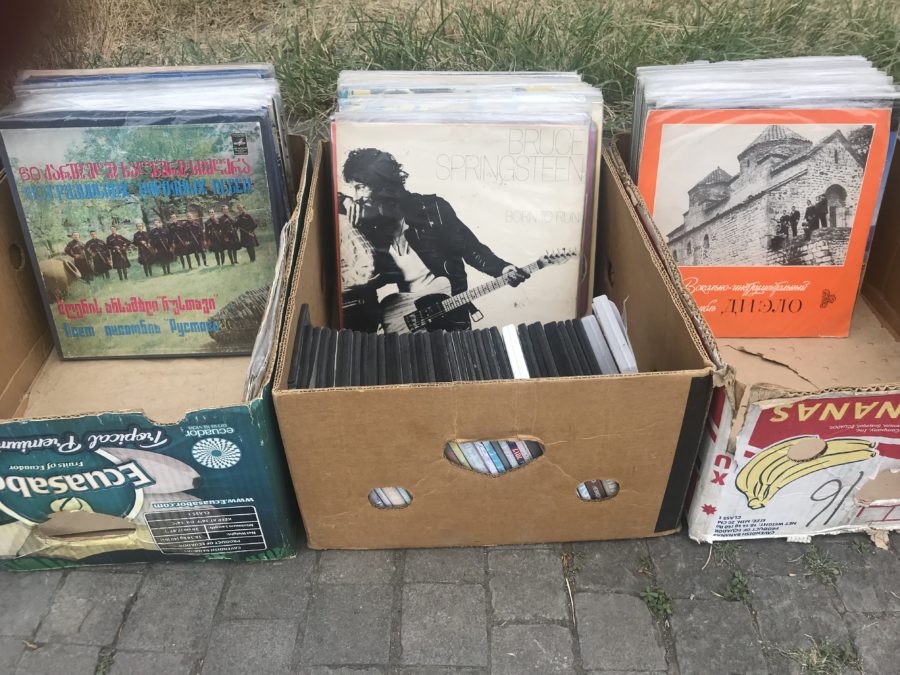Our modern lives have become disconnected from our environment and our place in it. And since I am an architect, and my core competency is in the built environment, I thought I would try to describe my idea of belonging… through song.
For I like the stories song tells us about belonging, including what happens when the heart goes out of it. They’re pretty good at expressing this in American song and there’s no song so heartless as Gene Pitney’s “24 Hours from Tulsa”. One day away from her arms he sees somebody new and: “she took me to a café, she asked me if I would stay; I said; okay” and he’s gone, all ties severed, straight as an arrow, free as a bird.
I lived in America for a year and when I leaned out the window of the apartment in San Francisco where I first stayed I thought of him, and his heartless freedom, as I gazed down the endless, gridiron street, running straight as an arrow, free as a bird, out to the horizon.
That horizon was a hill, with some lovely towers on it, and I said to my new friends that I’d like to walk there. But they told me that though the towers were in a nice district there were less nice ones in-between, within which I should not walk; and I marvelled at the idea, new to me, that you could look right through whole districts instead of just being in them, and started to understand the spatial form – the architecture – of Gene’s outward-looking, frontier-seeking place, and its heartless freedom.
So I got in a car to drive to the hill. But soon I was stuck in a massive, immobile, 8 lane-wide jam with, trapped deep in the morass, an ambulance, tragic and surreal, its lights and siren going frantic. And another American song came to me, the wonderfully-vainglorious slab of Americana that is Bruce Springsteen’s “Born to Run”, which can raise the hair on the back of my neck as it builds and then pauses for maximum impact before an explosive denouement that is, in truth, bathetic collapse, for its “1-2-3-4!… Highways jammed with broken heroes on a last-chance power drive” tells us of nothing but vexed testosterone in stationary traffic.
Gene Pitney’s man will leave the “somebody new” he has found just as he left his last love, just as the dream of spatial freedom our expansionist, outward looking and mechanistic culture follows will deliver Springsteen’s boys into that jammed highway, frustrated and fuming.
From a distance the freedom that they voluntarily seek, and dislocation that they find, seems identical to the condition of a refugee or one transported, endlessly moved-on. Robert Johnson, Delta-blues genius and descendant of transported slaves, perfectly encapsulates all the dislocation, angst, war and displacement of our bitter and deracinated 20th Century in “Hellhound on my Trail”: “Got to keep moving, got to keep moving, blues falling down like hail” – the refugee condition, Springsteen’s boys and Gene’s cheat all captured in a two-and-a-half minute howl of existential pain.
It was a restless century, during which we reached the limit of our outward-lookingness. There’s no more poignant representation of this than the famous 1968 “Earthrise” photographs by Apollo 8 astronaut Bill Anders. Our wonderfully-human drive to explore and exploit all we can has led us out to a new world; but this promised land is grey, lifeless and of no obvious worth, other than that of symbolic conquest. In stopping and turning back to look at the wee blue ball that is our home, as it rose above the moon’s grey horizon, we saw, clearly, as if for the first time, how beautiful, unique and fragile our home is.
The photograph has been celebrated as a defining moment in the birth of environmentalism, but it also tells us something about the limits of the freedom of movement we have sought – the horizons we have explored and the machines we have built that have taken us there.
So, such “freedom” is a lovely thing, and has brought us the ability to move all around the world, exchanging ideas and places with all those we share our diverse planet with. But the “free as a bird”, solipsistic and personal freedom of the unfettered-self is illusory – the bird is not free like Gene thinks he is: it has a nest to build, chicks to feed, a family to defend. For the bird, as Friedrich Engels wrote, “freedom is the consciousness of necessity” or, in song, Kris Kristofferson’s “Freedom’s just another word for nothing left to lose” so comes with belonging – a responsibility to home but also, through home, to the integrity of the wider world it is part of.
Ian Jack has written, in “Ghost Town”, of the erosion of the community he grew up in and the warm, enclosing, town-centred life that went with it: “… it would be easy to say that what ended this life was the exhaustion of the mines, the collapse of the linen industry, the closure of the nearby dockyard. But it wouldn’t be true, what ended it wasn’t poverty but rootless wealth.” That “rootless wealth” is an important insight, set alongside the solipsistic ideal of “the unfettered self”, where we tend to rate those who have left, and those who follow only their egos. It’s the uncoupling of the ideal of freedom from a wider sense of belonging – or, even, not so much any conscious uncoupling as just, simply, that wealth, the admiration of those that leave and the means of transport allows, or even encourages us, to turn our backs on our roots and move on, ties severed.
“Belonging”, for me, is the “yin” that has been uncoupled from the “yang” of the unfettered self. It makes sense of much that troubles us, about what we feel we have lost.
As an example, there was much pain over the recent use, by a much-loved Scottish writer, of an unhappy grading – “settler” or “colonist” – to categorise as good or bad those who came from outwith Scotland to live and work here. I thought that this was not just ugly but the wrong way of approaching the reality of mobility and the need to find some balance to it – after all, don’t Scots go out to other places too, as “settlers” and “colonists” themselves? Isn’t the real issue something deeper, about a sense of belonging whose centrality to our lives is ignored or belittled? A “belonging” that does not, in any sense, preclude us from moving away, but makes us care more for where we are, wherever we are.
And then, following it, came a companion, ugly view from a “Scots-born Canadian tycoon”, Bob Buchan, who funds a chair at Heriot-Watt University so gets to be its Chancellor, from which lofty position he lectures us stay-at-homes that: “Being outward-looking is not part of Scots culture. The outward-looking ones left.” Tell that to David Hume, Adam Smith or James Hutton – or any of Scotland’s Enlightenment Giants, who managed to be quite outward-looking from this wee place.
But I do I recognise the persistence of the sentiment. I went to a school where, if you didn’t become an Edinburgh lawyer, you sought your future elsewhere, for staying-put betrayed a failure of ambition – the failure to be “outward-looking”. I stayed because I felt it was my place, and I wanted to work within and for it; but all my friends left, and one or two of them have looked just a tiny bit askance at those from outwith Scotland who replaced them (as if we should have just turned-off the lights when they left, and mouldered).
Such issues of mobility do not relate only to what nation we live in, but also how we live our lives within it. So, to our lives in our cars and the everyday, mechanistic and car-bound culture we have grown used to, with ample parking everywhere, and everything in its place for efficient business-delivery: from the development giants who threw up the boxes on the greenfield sites to the retail giants who feed our consumer needs. No mess and no nasty surprises. And no ambiguity, no history, no belonging, nowhere for dissidence, no community, no grit, no creativity…
I’m lucky: I live in an old community and walk or cycle through the park to work. (My shops are near, entertainment too.) I get rained on sometimes and sometimes even sunned-on too; I hear the birdies and see the trees and say hello to friends. And on occasion one of them tells me something helpful to me – to my advantage in my work. So I arrive at work healthier, happier, and maybe even a wee bit more business-like. It’s a nice corner of town that I live in; but the principles that work for me, of nearness and amenity, work anywhere, and save me money – never-mind all the lucrative things I can do with the time spent not sitting in traffic.
I’m far from alone in my recognition of this. There’s a huge amount of activity around a number of urban-centred ideas: such as recognition that cities are the nation’s creative and economic powerhouses; or that the ideals of community and heritage that towns embody need recovered; or – and this crucial aspect is less-recognised – that in pursuing a low-carbon economy and fighting climate change, the “Eco-town” title, that is spun by those marketing some new, car-dependant suburb built on farmland, really should apply to the nearby, existing (but struggling) town, that the new development aims to suck middle class money out of. It’s our existing communities, with their infrastructure of roads, drains, schools and transport – and people – that are our Eco-towns, our true, sustainable communities. And we might also note that a society based on the car excludes those who lack one, so that towns, with their public transport and their walkability, represent democratic accessibility for all.
But maybe the tide has turned, and we are coming to understand that the post-war vision of a built environment seen exclusively through a car windscreen has run its course; and if we knit together these ideals – of creativity, community and sustainability – we could replace it by a vision of the future which emphasises some old, homespun urban virtues.
So the Review shows that town centres are important to us, as creative and social animals, and suit our aspirations towards an economically-effective, low-carbon and socially-accessible Scotland. It offers the Scottish Government, and the people of Scotland, a range of measures to bring investment and footfall into the heart of our communities.
Town centres offer everything people need – homes, leisure, workplaces, parks, shops and civic and cultural institutions – and we want to enhance that bustle and diversity: more people living there, encouragement for communities, businesses and local authorities, and supportive planning and digital initiatives.
There’s wide agreement on the need for action and optimism that the changes proposed can help foster a renewed sense of community and enterprise, and maybe even a new sense of belonging.


Malcolm Fraser led The Scottish Government’s National Review of Town Centres – the Fraser Review – with an accompanying panel of industry and community experts, which reported in July 2013.
Article revised October 2019

